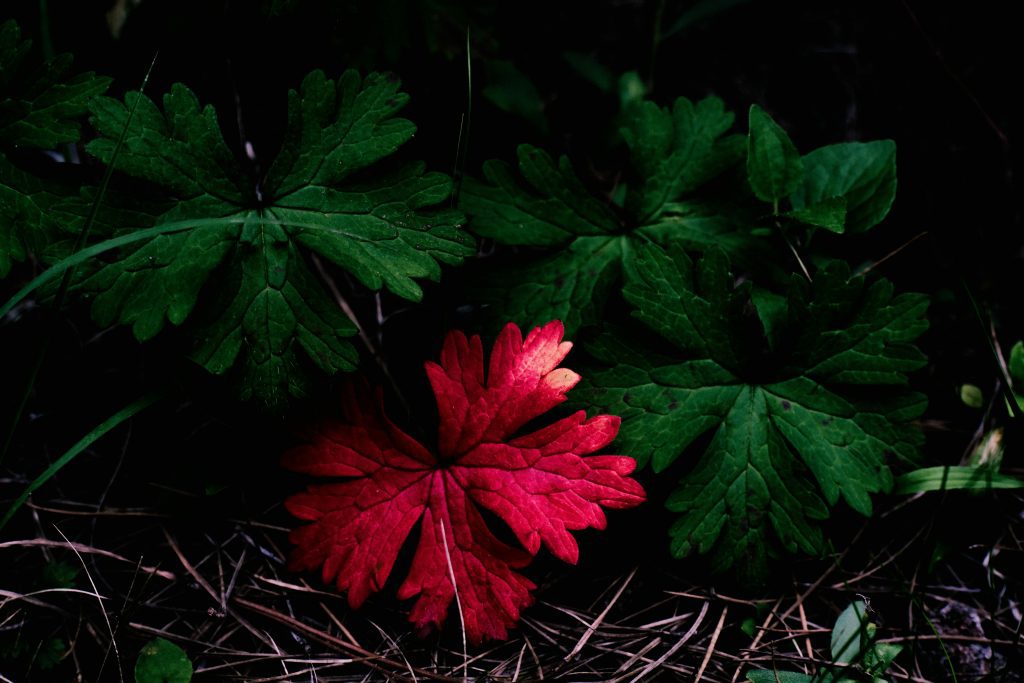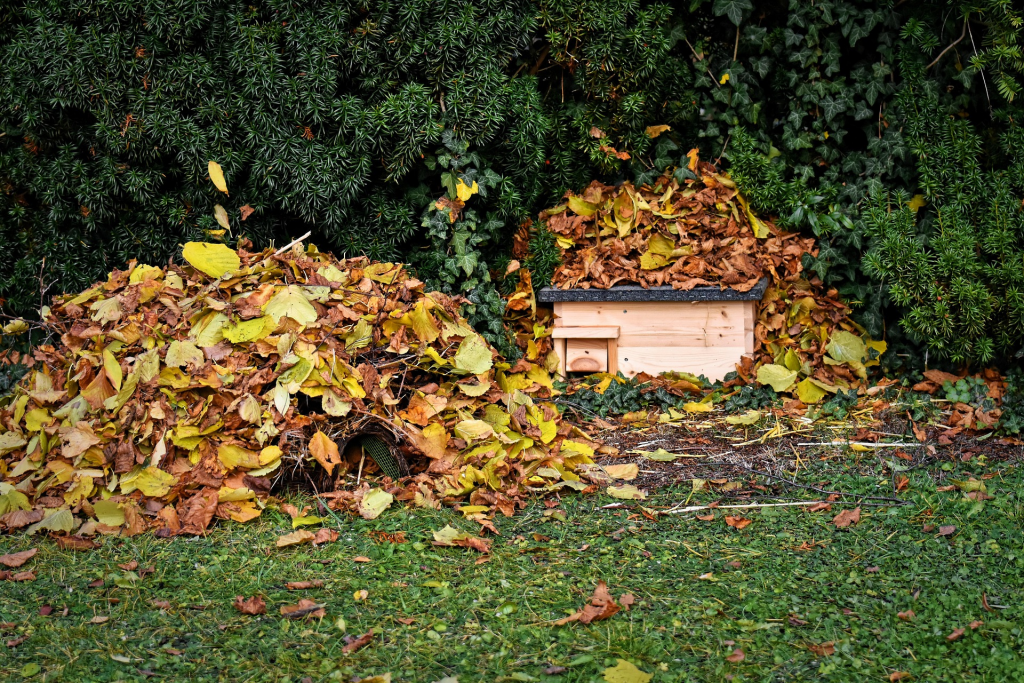As the vibrant hues of summer fade into the warm, earthy tones of autumn, I find myself captivated by the subtle transformations taking place in the natural world around me. The air becomes crisper, and the days grow shorter, signalling a shift not only in the weather but also in the behaviour of wildlife. This season is a time of preparation for many creatures, as they gather food and seek shelter in anticipation of the colder months ahead.
Observing these changes in my garden has deepened my appreciation for the intricate relationships between plants and animals, and it has inspired me to create a space that welcomes and nurtures the diverse wildlife that calls my garden home. Autumn is a particularly enchanting time for wildlife enthusiasts like myself. The migration of birds, the bustling activity of squirrels gathering acorns, and the sight of hedgehogs preparing for hibernation all serve as reminders of nature’s cycles.
I have come to realise that my garden can play a vital role in supporting these creatures during this critical period. By understanding the needs of local wildlife and making thoughtful choices about my gardening practices, I can contribute to a thriving ecosystem right outside my door. This article will explore the importance of native planting, how to create a wildlife-friendly habitat, and the myriad benefits that come from embracing autumn wildlife in my garden.
Summary
- Autumn is a vibrant season for wildlife, with many species preparing for the colder months ahead.
- Native planting is crucial for supporting local ecosystems and providing food and shelter for wildlife.
- When choosing native plants for your garden, consider the specific needs of local wildlife and the conditions of your garden.
- Creating a wildlife-friendly habitat involves providing food, water, shelter, and nesting sites for a variety of species.
- Attracting birds to your garden can be achieved through the use of bird feeders, bird baths, and native plants that provide food and shelter.
The Importance of Native Planting
One of the most significant steps I can take to support local wildlife is to incorporate native plants into my garden. Native species are those that have evolved in a particular region over thousands of years, adapting to the local climate and soil conditions. By choosing these plants, I not only enhance the beauty of my garden but also provide essential resources for the wildlife that has coexisted with them for generations.
Native plants offer food, shelter, and breeding grounds for various species, making them indispensable allies in my quest to create a wildlife-friendly environment. Moreover, native plants are often more resilient and require less maintenance than non-native varieties. They are well-suited to local conditions, which means they are less likely to suffer from pests and diseases.
This resilience allows me to cultivate a garden that thrives with minimal intervention, reducing my reliance on chemical pesticides and fertilisers. By embracing native planting, I am not only fostering a healthier ecosystem but also contributing to the conservation of local flora and fauna. This approach aligns with my desire to create a sustainable garden that reflects the natural beauty of my surroundings while supporting the wildlife that depends on it.
Choosing the Right Native Plants for Your Garden

Selecting the right native plants for my garden involves understanding the specific species that thrive in my region. I have discovered that researching local flora is both an educational and enjoyable process. By visiting botanical gardens, consulting local gardening clubs, and exploring online resources, I can identify plants that will flourish in my garden’s unique conditions.
Factors such as soil type, sunlight exposure, and moisture levels all play a crucial role in determining which native species will thrive. In addition to considering environmental factors, I also think about the various wildlife species I hope to attract. For instance, if I want to draw butterflies into my garden, I might choose nectar-rich flowers like knapweed or purple coneflower.
If I aim to support bees, I could plant species such as wild bergamot or goldenrod. By carefully selecting a diverse array of native plants, I can create a vibrant tapestry of colour and texture while providing essential resources for pollinators and other wildlife. This thoughtful approach not only enhances the aesthetic appeal of my garden but also fosters a sense of harmony between plants and animals.
Creating a Wildlife-Friendly Habitat
| Metrics | Data |
|---|---|
| Number of native plant species | 25 |
| Number of bird species observed | 15 |
| Percentage of area covered by trees | 40% |
| Number of insect species identified | 30 |
Creating a wildlife-friendly habitat in my garden requires more than just planting native species; it involves designing an environment that meets the needs of various creatures. I have learned that incorporating elements such as water sources, shelter, and food sources is essential for attracting and sustaining wildlife populations. For instance, adding a small pond or birdbath can provide much-needed hydration for birds and other animals while creating a serene focal point in my garden.
In addition to water features, I have found that incorporating diverse habitats is crucial for supporting different species. This might include leaving areas of my garden wild with native grasses and wildflowers, creating brush piles for small mammals, or installing birdhouses and bat boxes. By providing a range of habitats within my garden, I can cater to the needs of various wildlife species while promoting biodiversity.
This multifaceted approach not only enriches my garden’s ecosystem but also allows me to witness the fascinating interactions between different creatures as they thrive in their shared environment.
Attracting Birds to Your Garden
Birds are among the most delightful visitors to my garden during autumn, and I have discovered several effective strategies for attracting them. One of the simplest ways to entice birds is by providing food sources throughout the season. I have started to plant berry-producing shrubs such as hawthorn and elderberry, which offer sustenance for birds as they prepare for migration or winter survival.
Additionally, I have set up bird feeders filled with seeds and suet to provide an easily accessible food source. Creating a welcoming environment for birds also involves ensuring they have safe places to perch and nest. I have incorporated trees and shrubs with dense foliage into my garden design, offering shelter from predators and harsh weather conditions.
Furthermore, I have learned that maintaining a natural landscape with minimal disturbance encourages birds to visit regularly. By observing their behaviours and preferences, I can continue to refine my approach to attracting these beautiful creatures while enjoying their songs and antics throughout the autumn months.
Providing Shelter for Small Mammals

In addition to birds, small mammals such as hedgehogs, rabbits, and voles are vital components of my garden’s ecosystem. To support these creatures during autumn, I have made it a priority to provide adequate shelter options. One effective method is creating brush piles using fallen branches and leaves; these piles offer hiding spots for small mammals while also serving as habitats for insects and other beneficial organisms.
I have also considered incorporating features such as log piles or rockeries into my garden design. These structures not only add visual interest but also create microhabitats where small mammals can find refuge from predators and harsh weather conditions. Additionally, leaving areas of my garden unmanicured allows natural vegetation to flourish, providing further cover for these creatures.
By fostering an environment where small mammals feel safe and secure, I am contributing to a balanced ecosystem that thrives on diversity.
Creating a Pollinator-Friendly Garden
As an avid gardener, I recognise the critical role that pollinators play in maintaining healthy ecosystems. Bees, butterflies, and other pollinators are essential for fertilising many plants, including those that produce fruits and vegetables. To create a pollinator-friendly garden, I have focused on planting a variety of native flowering species that bloom at different times throughout the season.
This ensures that there is always something in bloom for pollinators to feed on. In addition to selecting diverse flowering plants, I have also made an effort to avoid using pesticides or herbicides that could harm these beneficial insects. Instead, I rely on natural pest control methods such as companion planting and encouraging beneficial insects like ladybirds and lacewings.
By creating a safe haven for pollinators in my garden, I am not only supporting their populations but also enhancing the overall health and productivity of my garden.
Maintaining Your Native Garden
Maintaining a native garden requires ongoing attention and care, but I have found it to be a rewarding endeavour. Regularly monitoring plant health and growth allows me to identify any issues early on, ensuring that my native plants continue to thrive. While native plants generally require less maintenance than non-native varieties, occasional weeding and pruning are necessary to keep them healthy and encourage new growth.
I have also learned the importance of seasonal tasks such as mulching and composting. Applying organic mulch helps retain moisture in the soil while suppressing weeds, creating an ideal environment for native plants to flourish. Additionally, composting kitchen scraps and garden waste enriches the soil with nutrients, promoting healthy plant growth without relying on synthetic fertilisers.
By adopting these sustainable practices, I can maintain a vibrant native garden that supports wildlife while minimising my environmental impact.
Benefits of Native Planting for the Environment
The benefits of native planting extend far beyond my own garden; they contribute significantly to environmental health on a larger scale. Native plants play a crucial role in stabilising soil and preventing erosion by establishing deep root systems that hold soil in place. This is particularly important in areas prone to flooding or heavy rainfall, where erosion can lead to significant ecological damage.
Furthermore, native plants support local wildlife populations by providing food sources and habitats essential for survival. By fostering biodiversity within my garden through native planting, I am contributing to healthier ecosystems that can better withstand environmental changes such as climate change or habitat loss. This interconnectedness between plants and animals highlights the importance of preserving native flora as a means of protecting our planet’s biodiversity.
Encouraging Biodiversity in Your Garden
Encouraging biodiversity in my garden has become one of my primary goals as a gardener. By creating diverse habitats through thoughtful planting choices and design elements, I can support various species of flora and fauna while enhancing the overall resilience of my garden ecosystem. Incorporating layers of vegetation—such as trees, shrubs, perennials, and ground cover—creates microhabitats that cater to different wildlife needs.
I have also embraced companion planting techniques that promote beneficial relationships between different plant species. For example, planting marigolds alongside vegetables can deter pests while attracting pollinators at the same time. This holistic approach not only enriches my gardening experience but also fosters an environment where diverse species can thrive together harmoniously.
Embracing Autumn Wildlife in Your Garden
As autumn unfolds its rich tapestry of colours and sounds in my garden, I am reminded of the beauty and complexity of nature’s cycles. By embracing native planting and creating a wildlife-friendly habitat, I have cultivated an environment that supports diverse species while enriching my own gardening experience. The joy of witnessing birds flit about the trees or observing hedgehogs scurrying through fallen leaves fills me with gratitude for the interconnectedness of life.
In nurturing this space for wildlife during autumn—and throughout the year—I am not only contributing to local ecosystems but also fostering a deeper connection with nature itself. As I continue to learn about the needs of various species and adapt my gardening practices accordingly, I look forward to witnessing the ongoing transformations within my garden as it becomes a sanctuary for autumn wildlife. Embracing this journey has not only enhanced my appreciation for nature but has also instilled within me a sense of responsibility towards preserving our planet’s precious biodiversity for future generations to enjoy.
As autumn approaches, many gardeners are turning their attention to native planting to support local wildlife. By choosing plants that are indigenous to the area, you can create a habitat that attracts and sustains a variety of species, from birds to beneficial insects. For those interested in expanding their eco-friendly efforts beyond the garden, consider exploring how to integrate sustainable practices into your home design. An insightful article on this topic is Building a Sustainable Future: Designing Your Nature-Friendly House, which offers valuable tips on creating a home that harmonises with the natural environment.
FAQs
What is native planting for autumn wildlife?
Native planting for autumn wildlife refers to the practice of using native plants to create habitats and food sources for wildlife during the autumn season. This can include planting trees, shrubs, and flowers that are native to a specific region and provide food and shelter for local wildlife.
Why is native planting important for autumn wildlife?
Native planting is important for autumn wildlife because it helps to support local ecosystems and biodiversity. Native plants are adapted to the local climate and soil conditions, making them more resilient and better able to provide food and shelter for wildlife during the autumn months.
What are some examples of native plants for autumn wildlife?
Examples of native plants for autumn wildlife include oak trees, hawthorn shrubs, and aster flowers. These plants provide food and shelter for a variety of wildlife, including birds, insects, and small mammals, during the autumn season.
How can I create a native planting scheme for autumn wildlife?
To create a native planting scheme for autumn wildlife, you can start by researching native plants that are suitable for your local area. Consider factors such as soil type, sunlight, and water availability. Once you have selected the appropriate plants, you can plan and design your planting scheme to provide a variety of food and shelter for wildlife.
What are the benefits of native planting for autumn wildlife?
The benefits of native planting for autumn wildlife include supporting local ecosystems, providing food and shelter for wildlife, and creating a more sustainable and resilient landscape. Native plants also require less maintenance and water, making them a more environmentally friendly choice for landscaping.


